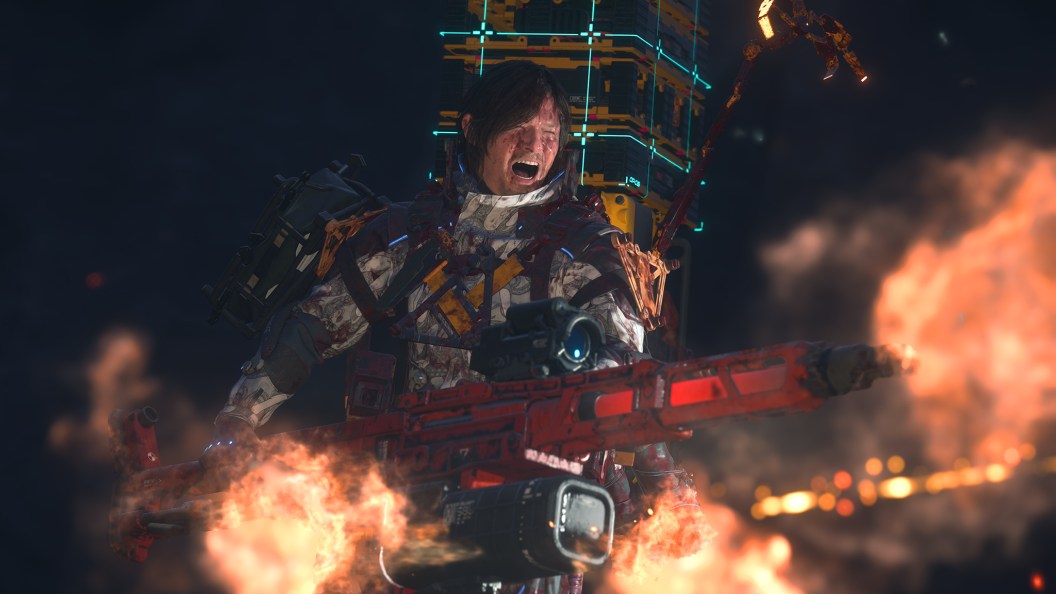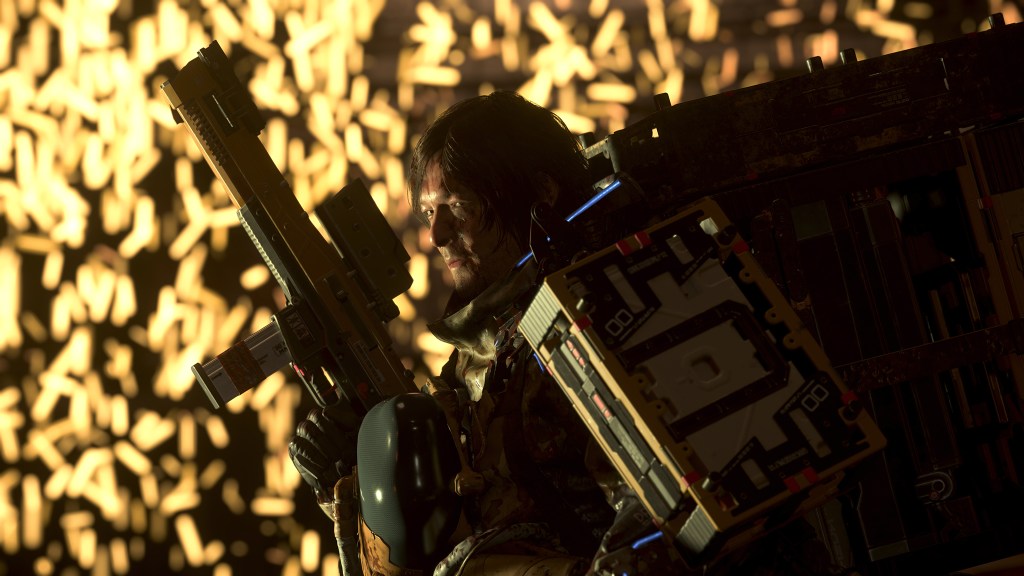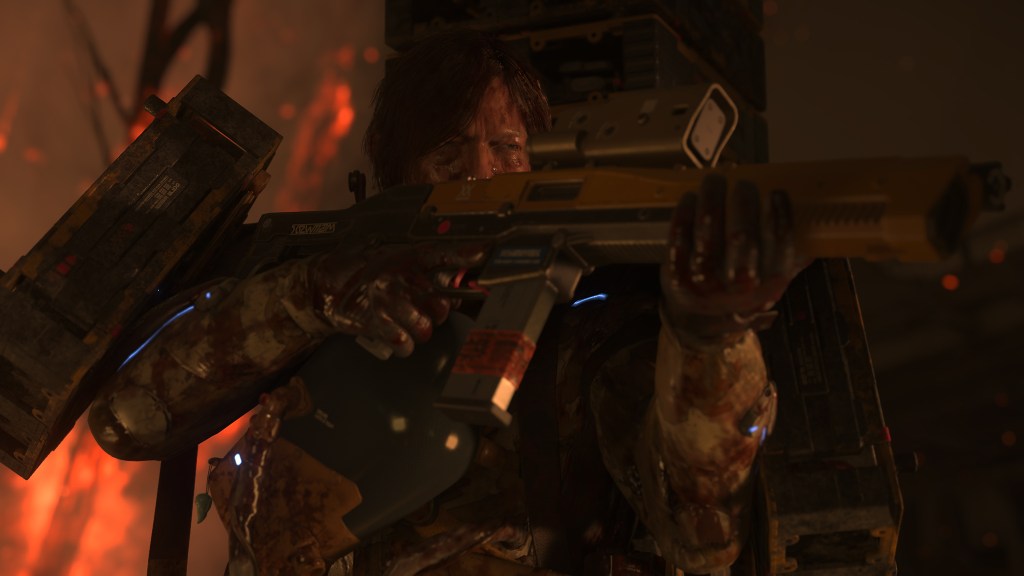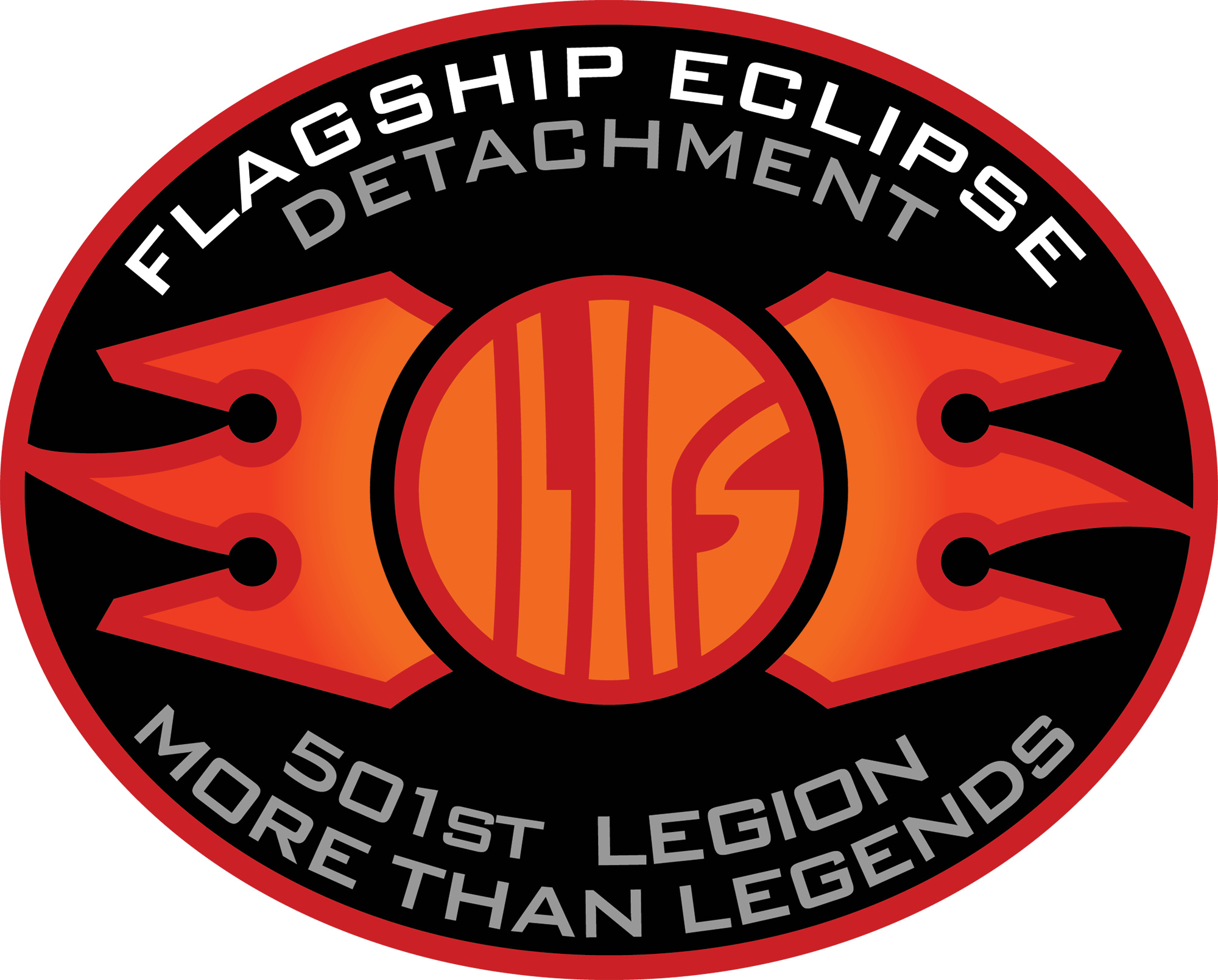
Sam Porter Bridges is a lover, not a fighter. He’s a caring father and skilled deliveryman, a man who’d rather play with his daughter or lug a whole kangaroo to an isolated wildlife retreat than line up targets at the gun range. The first Death Stranding, maybe unintentionally, conveyed this through the mechanics. Shooting was clunky and not encouraged in most situations. But that’s changed in Death Stranding 2: On the Beach where Sam’s trigger finger is far too itchy.
This is made clear in the sequel’s introductory hours since one of the early missions makes players clear out a base, an objective type not quite seen in the first game. Sneaking is an option, but Sam is not as agile as, say, Solid Snake, and all the junk in his trunk makes him easy to spot. Pulling out a gun is an inevitability.
And this pops up continually until the game’s explosive finale. These base-clearing missions sit alongside ones where players are directly tasked with blasting waves and waves of enemies as if it were some sort of mini-horde mode. There’s not even an illusion of stealth or other less mindless options in these cases. Sam straps up like he’s Rambo on a mission to save prisoners of war.

RELATED: Death Stranding 2 Review: A Powerful Odyssey
From a mechanical standpoint, gunplay is dull and lacks the fine precision of a more dedicated shooter. Moving the reticle is far too swimmy and Sam is still prone to wobbling uncontrollably, both of which make shots tedious to line up. Switching weapons is similarly annoying, as is having to pick up multiple versions of the same weapon for more ammo. The game is always fighting the player during these moments and this friction is never in service of something more intriguing. Most of the problems were present in the first game, which is why it is infinitely puzzling that Kojima Productions doubled down on combat in this follow-up.
Director Hideo Kojima has repeatedly spoken in the lead-up to this launch about being frustrated at the notion that too many people would like Death Stranding 2. It’s an odd, Kojima-ass flex, but one rooted in his desire to have something more interesting and a game that’s loved in the long term rather than a fleeting blockbuster that evaporates from the player’s brain shortly after the credits roll. But smoothing out the game’s overall difficulty and adding more action is exactly how a game would soften itself in order to appeal to more players.
If Kojima truly wanted to have a more divisive game, it would have made more sense to go in a different direction — one that’s more congruent with Death Stranding’s tone — and take away Sam’s ability to fire a traditional gun. By cutting out the easy, go-to option seen in so many other games, Death Stranding 2 could have better embraced what makes it unique.

Death Stranding 2, to its slight detriment, is already not as surprising as it probably should be. Despite the precedent set by other games directed by Kojima, Death Stranding 2 plays it straight by being more Death Stranding; there aren’t any unexpected gameplay or narrative twists to set it apart.
Death Stranding was already a game that made a bold statement by being a big-budget release that was mostly about deliveries. It was a fresh idea that swerved when so many other new IPs would have followed trends to cling to some semblance of safety. Death Stranding 2 could have kept with that bold spirit by not emphasizing action like many other sequels and instead accentuating what it does differently. By going the opposite direction and further embracing its delivery systems over gunplay, Death Stranding 2 would have been able to have its own radical shift that could have made it stick out like many of Kojima’s past sequels.
This isn’t to say Death Stranding 2 shouldn’t have combat at all; it fits the world to have enemy forces scattered about. But the tools presented to Sam shouldn’t come in the form of a gun. Gadgets that get around combat rather than firearms that directly engage with it would be better prepared to set up more unique scenarios that also highlight Sam’s strengths. He’s a porter and not a soldier, so the idea that he’d pick up an assault rifle without a second thought isn’t the most believable idea. It would better serve his character and give this game a more distinct identity if enemies were treated as obstacles to be outsmarted and overcome rather than moving targets to blast.
It seemed like this was the direction the series was going in, too, judging by how combat played out in the first game. It was similarly cumbersome, but it seemed designed in a way to discourage players from going down that violent path. Killing an enemy would result in the tedious process of having to burn the corpse, lest players wanted to trigger a massive explosion called a voidout. The Bola Gun and Director’s Cut-exclusive Maser Gun were two underpowered nonlethal weapons that offered some ranged options while still handicapping players in some way.

But those nontraditional options in Death Stranding 2 aren’t as enticing. Nonlethal ammo is not rare and can be found in most types of powerful rifles and shotguns, meaning there’s not much of a shortcoming to overcome anymore since enemies can be easily dispatched without risking a voidout. BTs also take damage from these same nonlethal weapons, further flattening these systems for the sake of oversimplification. Vehicles can be equipped with auto-targeting guns, as well.
This less thoughtful approach is precisely at odds with the unique ways Kojima-led games have dealt with nonlethal play in the past, specifically the Metal Gear Solid series. Since nonlethal options were always more limited, it was almost always harder to play peacefully but rewarding for those who put in the time. Morality was gamified since there were sometimes gameplay-relevant penalties for bloodthirsty players, like the Sorrow “boss fight” in Metal Gear Solid 3: Snake Eater that gets longer with every slain soldier.
It was a badge of honor to go on a FoxHound rank-worthy no-kill run or fell bosses by knocking out their stamina bars, but Metal Gear Solid V: The Phantom Pain, Portable Ops, and Peace Walker all took this further by having recruiting tools that made players think twice about killing; that S-rank engineer can’t develop better weapons if his gifted brain is leaking out of his skull. Death Stranding’s voidouts were a natural progression of this mechanically driven incentivization structure to be more peaceful.
Death Stranding 2 even has multiple missions that task the player with destroying weapon manufacturing facilities, offering a glimpse at what could have been and further muddying its stance on guns and the role they play in the game’s strange world. KojiPro had two paths to go down with Death Stranding 2, and it took the less interesting one, which makes the game slightly more generic. It’s still a game mostly about delivering goods, but it likely would have been better served by underlining those unique mechanics more instead of giving Sam more guns to play with. In referencing Kobo Abe’s short story “Nawa,” Death Stranding 2 makes a big fuss about sticks and ropes, but Sam should have just stuck to the rope.
The post Death Stranding 2 Would Be Better Without Guns appeared first on ComicBook.com.
